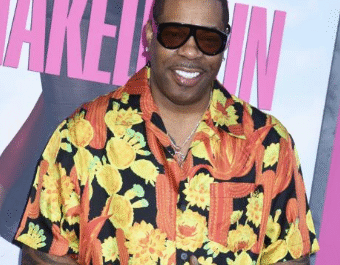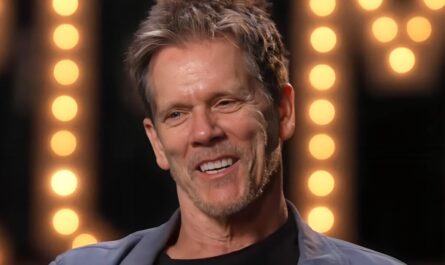A Glimpse Into the Origins of the Rap Icon
In a rare and revealing reflection, Eminem opened up about his early years, the innocence of childhood, and how the issue of race only entered his world when he stepped into hip-hop. The quote, simple yet profound, offers a glimpse into the mind of a man who not only rewrote the rules of rap but has continuously examined his place within it.
“When you’re a little kid, you don’t see color, and the fact that my friends were Black never crossed my mind. It never became an issue until I was a teenager and started trying to rap.”
Those words, spoken by Marshall Bruce Mathers III — the man the world knows as Eminem — speak volumes about the intersection of race, identity, and art, especially in a genre so deeply rooted in Black culture.
Growing Up in Detroit: A Childhood Without Barriers
Eminem’s early years were spent in the heart of Detroit, a city whose social fabric has long been shaped by both racial tension and rich musical legacy. Growing up in a predominantly Black neighborhood, the young Marshall didn’t view himself as an outsider. He was just another kid on the block — riding bikes, trading jokes, and soaking in the culture that surrounded him.
His childhood friends were Black. His earliest influences were Black artists. Hip-hop was the air he breathed, long before he understood the politics behind it.
“We were just kids,” he’s said in previous interviews. “We didn’t think about race. We thought about music, basketball, and who had the best jokes at lunch.”
But that innocence didn’t last forever.
The Shift: From Acceptance to Scrutiny
It wasn’t until Eminem began rapping in public — at open mics, high school hallways, and underground battles — that he realized his skin color had suddenly become a talking point.
In an arena where authenticity was everything, the presence of a white MC raised eyebrows. Doubts weren’t just about skill, but about credibility, cultural legitimacy, and place.
“That’s when I started hearing it,” he’s said. “People didn’t even want to hear me rap. They’d just see me and dismiss me.”
It was a wall he would spend years trying to climb — not with excuses, but with verses. Ferocious, precise, undeniable verses.
Fighting for Respect in a Culture That Shaped Him
To earn his place, Eminem knew he had to go harder, faster, and sharper than everyone else. He studied rhyme patterns obsessively, built a vocabulary that could slice through cynicism, and developed a style so technically brilliant that it forced people to listen — even if they didn’t want to.
He didn’t ask for acceptance. He demanded it.
And slowly, through relentless battles and unfiltered storytelling, he carved out his lane — not as a white rapper trying to fit in, but as a rapper who simply couldn’t be ignored.
A Complicated Journey with Race and Art
Eminem has never shied away from the complex reality of his success. He’s acknowledged that his skin color played a role in his fame, that being white in a Black-dominated genre created both barriers and privileges.
In his track “White America,” he raps:
“If I was Black, I woulda sold half.”
It’s a line that still stings, because it holds truth — and because it came from someone willing to confront that truth head-on.
Throughout his career, Eminem has used his platform not to speak over the culture, but to speak from within it — always acknowledging where he came from, and who came before him.
The Legacy of a Reluctant Trailblazer
Whether praised or criticized, Eminem’s impact is undeniable. He didn’t just become one of the most successful rappers of all time — he became a case study in what happens when talent meets tension, when art challenges assumptions, and when identity can’t be separated from the sound.
He brought millions of new ears to hip-hop, but he never claimed to redefine it. Instead, he consistently paid homage to the genre’s roots, collaborating with legends like Dr. Dre, Snoop Dogg, and 50 Cent, while constantly sharpening his craft.
“I’m a guest in the house of hip-hop,” he once said. “And I know that.”
From Silence to Self-Awareness
Today, Eminem speaks less than he once did — not because he has less to say, but because he knows when to let the work speak for itself. But in rare moments like this, his reflections provide a powerful reminder of where it all started.
That quote — about not seeing color until rap forced him to — isn’t just about childhood innocence. It’s about how art reveals the world’s divisions, and how it can also bridge them.
An Ongoing Conversation
In an era where race, culture, and representation remain hot-button topics, Eminem’s journey offers a valuable perspective — not as a blueprint, but as a lived experience filled with contradictions, learning curves, and growth.
His story isn’t one of perfection. It’s one of persistence, humility, and an enduring willingness to face uncomfortable truths.
“I came from nothing,” he once said. “And I was shaped by everything around me. The good, the bad, the real.”
A Reminder That Identity Is Never Simple
Eminem’s life proves that identity — especially in music — is layered. It’s about where you’re from, who raised you, who inspired you, and how you carry all of that into the world. His career is a testament to what happens when someone honors the culture they love by giving everything they have to it — not by asking to be let in, but by earning every inch of space.
And it all began with a kid who didn’t see color — until the world told him he had to.





